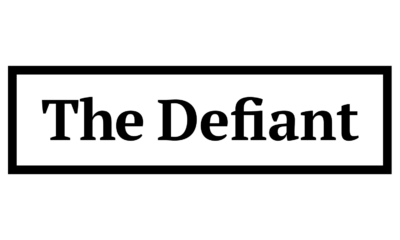News
Crypto for Advisors: Understanding Crypto

It was another big week in the US, with the launch of exchange-traded funds for Ethereum, making the second-largest cryptocurrency by market cap accessible to investors through a traditional offering.
Have you ever thought about how to evaluate cryptocurrency projects and what criteria to consider? In today’s issue, Matthew Burgoynepartner at law firm Osler Hoskin & Harcourt LLP, provides a guide for investment advisors to evaluate crypto projects.
In Ask an Expert, David Ben KayPresident of Function X, answers questions advisors can consider when evaluating investments.
–SM
As this week’s exclusive sponsors Crypto for Advisors newsletter, we would like to congratulate Grayscale for launch of their new Ethereum ETFThe ticker is simply ETH – we see what you did there!
You read Crypto for AdvisorsCoinDesk’s weekly newsletter that decodes digital assets for financial advisors. Subscribe here to get it every Thursday.
How to Evaluate Cryptocurrency Projects: A Guide for Investment Advisors
As the cryptocurrency and blockchain industry continues to gain momentum, investment advisors are undoubtedly facing an increasing number of questions from clients about specific crypto assets and the projects behind them. Evaluating these projects requires a thorough understanding of several crucial factors to ensure informed investment decisions. The following sections highlight areas that advisors should consider when assessing the nature and legitimacy of any cryptocurrency project and corresponding crypto asset:
Due diligence of the project founder
Research the background of project founders, including their professional history, past projects, and industry reputation. Look for verifiable expertise and be alert for potential fraud. Red flags include newly created social media profiles and anonymous teams.
Review and critical analysis of tokenomics
Tokenomics refers to the economic model of the token, including its supply, distribution, and utility within the project. The main aspects to analyze are:
-
Supply and distribution: Understand the total token supply and how it is distributed among stakeholders. Pay attention to the distribution between founders, team members, advisors, and investors. A well-balanced distribution minimizes the risk of market manipulation.
-
Utility: Evaluate the practical use of the token within the project. Tokens should have a clear purpose, such as facilitating transactions, accessing services, or encouraging participation. Projects with vague or unnecessary use of the token should be approached with caution.
-
Inflation and deflation mechanisms: Evaluate whether the project has mechanisms to control the token supply, such as token burning (reducing supply). Understanding these mechanisms helps assess the long-term stability of value.
The story continues
Business Plan Evaluation
A realistic and solid business plan is essential to the viability of any token project. In the crypto industry, a business plan is typically presented in a white paper, which is a foundational document that outlines the project’s vision, the nature and use of blockchain technology, and the implementation strategy. Key elements to review include:
-
Token requirement: Determine why a token is essential to the project. The token should solve a specific problem or improve the functionality of the project, not just serve as a fundraising tool.
-
Market need and competition: Analyze the market demand for the project solution and identify its competitors. As is the case in the world of traditional finance (“TradFi”), a unique value proposition and a well-defined market niche are indicators of potential success.
-
Revenue model: It is essential to understand how the project plans to generate revenue. Look for sustainable and scalable revenue streams that are realistically achievable under the given market conditions.
Risk factors
Identifying potential risks is essential when evaluating token projects. Common risk factors include:
-
Technical risks: Assess the likelihood of technical failures or vulnerabilities; multiple blockchain and software code audits conducted by reputable third parties are positive signs and reduce the likelihood of hacking incidents, which can result in significant losses for consumers.
-
Liquidity risks: The liquidity of some tokens may be heavily concentrated on a few crypto asset trading platforms or liquidity pools. When a significant portion of the tokens are held on only a few of these platforms, buying or selling them efficiently may become difficult, especially during periods of high trading volume.
-
Risks related to competitors: Many tokens face significant competition from other blockchain platforms that offer similar or improved features. When analyzing a cryptocurrency project, consider whether high gas/transaction fees or network congestion are associated with the blockchain. There may be competing projects and tokens that offer lower transaction costs and faster processing times, which could turn software developers and users away from the project under review.
Regulatory considerations
Assess whether the token issuance triggers any regulatory requirements, such as anti-money laundering (AML) laws or securities laws; many new projects trigger one or both areas of law, while some older, well-established projects that are sufficiently decentralized do not trigger these laws. It is essential to check whether the project founders have obtained legal advice and whether sales are restricted in major markets such as the US and UK. Such restrictions could indicate an attempt to circumvent securities regulators in those countries, suggesting that the token sale may involve the sale of securities or derivatives.
Conclusion
Evaluating token projects requires a holistic approach, taking into account the credibility of the founders, the token’s business model, the quality and viability of the business plan, potential risks, and regulatory compliance. By carefully analyzing these factors, investment advisors can provide informed advice to their clients, helping them navigate the complex and evolving cryptoasset landscape.
– Matthew Burgoyne, Partner, Osler Hoskin & Harcourt LLP
Ask an expert
Q: What are the key things to consider when reviewing cryptocurrency projects from a legal perspective?
A: From a legal perspective, three key areas I look at when evaluating a cryptocurrency project are: compliance, governance, and security. Does the team include dedicated and knowledgeable people responsible for these areas? While it is natural and expected that the team will have technical and marketing expertise, I would also like to see people with strong legal and financial backgrounds to ensure that the company has been set up in compliance with local laws to be able to operate as it sees fit and that it is aware of international laws and standards that could impact the execution of its proposed business plan. I would prefer to see these people in key management and decision-making positions, although if the company is at a very early stage, the company’s advisors should at least include lawyers and accountants or people with strong legal and financial management backgrounds. If the company intends to issue a token or has already done so, I would also expect to see a legal opinion from the relevant jurisdictions to ensure compliance with local laws and regulations.
Q: How can advisors help their clients make investment decisions based on this information?
A: Legal compliance and governance are factors that factor into any investor’s assessment of risk in a proposed project. They are by no means the only factors, but simply part of the calculation in determining whether or not to invest. Particularly in the cryptocurrency sector, many legal issues remain in gray areas – and therefore potentially riskier. This will depend on the investor’s risk tolerance and judgment as to whether the potential returns of a project outweigh the potential risks.
Q: What is a good example of a project from a legal point of view?
A: Projects that are past the start-up stage and have a proven track record of compliance and good governance practices will be easier to monitor. The required licenses, registrations and filings will already be in place, as well as guidelines for internal practices and operations that are usually in written form. This is in contrast to early-stage startups. In these cases, more emphasis will be placed on individual team members and their experience and track record in other projects, as well as on the white paper that envisions the regulatory framework in which the project will operate and how governance issues will be handled internally.
While these comments are quite general and can be applied to any project, they are particularly important in the field of cryptocurrencies where, from a legal point of view, many things are still in flux. Lawyers have the task of gathering as much objective information as possible to present the potential investor with an assessment that allows them to make an informed decision.
– David Ben Kay, President, Function X
Continue reading
News
Bitcoin soars above $63,000 as money flows into new US investment products

Bitcoin has surpassed the $63,000 mark for the first time since November 2021. (Chesnot via Getty Images)
Bitcoin has broken above the $63,000 (£49,745) mark for the first time since November 2021, when the digital asset hit its all-time high of over $68,000.
Over the past 24 hours, the value of the largest digital asset by market capitalization has increased by more than 8% to trade at $63,108, at the time of writing.
Learn more: Live Cryptocurrency Prices
The price appreciation was fueled by record inflows into several U.S.-based bitcoin cash exchange-traded funds (ETFs), which were approved in January this year.
A Bitcoin spot ETF is a financial product that investors believe will pave the way for an influx of traditional capital into the cryptocurrency market. Currently, indications are favorable, with fund managers such as BlackRock (BLK) and Franklin Templeton (BEN), after allocating a record $673 million into spot Bitcoin ETFs on Wednesday.
Learn more: Bitcoin’s Success With SEC Fuels Expectations for an Ether Spot ETF
The record allocation surpassed the funds’ first day of launch, when inflows totaled $655 million. BlackRock’s iShares Bitcoin Trust ETF (I BITE) alone attracted a record $612 million yesterday.
Bitcoin Price Prediction
Earlier this week, veteran investor Peter Brandt said that bitcoin could peak at $200,000 by September 2025. “With the push above the upper boundary of the 15-month channel, the target for the current market bull cycle, which is expected to end in August/September 2025, is raised from $120,000 to $200,000,” Brandt said. published on X.
The influx of capital from the traditional financial sphere into Bitcoin spot ETFs is acting as a major price catalyst for the digital asset, but it is not the only one. The consensus among analysts is that the upcoming “bitcoin halving” could continue to drive flows into the bitcoin market.
The Bitcoin halving is an event that occurs roughly every four years and is expected to happen again next April. The halving will reduce the bitcoin reward that miners receive for validating blocks on the blockchain from 6.25 BTC to 3.125 BTC. This could lead to a supply crunch for the digital asset, which could lead to price appreciation.
The story continues
Watch: Bitcoin ETFs set to attract funds from US pension plans, says Standard Chartered analyst | Future Focus
Download the Yahoo Finance app, available for Apple And Android.
News
FRA Strengthens Cryptocurrency Practice with New Director Thomas Hyun

Forensic Risk Alliance (FRA), an independent consultancy specializing in regulatory investigations, compliance and litigation, has welcomed U.S.-based cryptocurrency specialist Thomas Hyun as a director of the firm’s global cryptocurrency investigations and compliance practice. Hyun brings to the firm years of experience building and leading anti-money laundering (AML) compliance programs, including emerging payment technologies in the blockchain and digital asset ecosystem.
Hyun has nearly 15 years of experience as a compliance officer. Prior to joining FRA, he served as Director of AML and Blockchain Strategy at PayPal for four years. He established PayPal’s financial crime policy and control framework for its cryptocurrency-related products, including PayPal’s first consumer-facing cryptocurrency offering on PayPal and Venmo, as well as PayPal’s branded stablecoin.
At PayPal, Hyun oversaw the second-line AML program for the cryptocurrency business. His responsibilities included drafting financial crime policies supporting the cryptocurrency business, establishing governance and escalation processes for high-risk partners, providing credible challenge and oversight of front-line program areas, and reporting to the Board and associated authorized committees on program performance.
Prior to joining PayPal, Hyun served as Chief Compliance Officer and Bank Secrecy Officer (BSA) at Paxos, a global blockchain infrastructure company. At Paxos, he was responsible for implementing the compliance program, including anti-money laundering and sanctions, around the company’s digital asset exchange and its asset-backed tokens and stablecoins. He also supported the company’s regulatory engagement efforts, securing regulatory approvals, supporting regulatory reviews, and ensuring compliance with relevant digital asset requirements and guidelines.
Thomas brings additional experience in payments and financial crime compliance (FCC), having previously served as Vice President of Compliance at Mastercard, where he was responsible for compliance for its consumer products portfolio. He also spent more than seven years in EY’s forensics practice, working on various FCC investigations for U.S. and foreign financial institutions.
Hyun is a Certified Anti-Money Laundering Specialist (CAMS) and a Certified Fraud Examiner (CFE). He is a graduate of New York University’s Stern School of Business, where he earned a bachelor’s degree in finance and accounting. Additionally, he serves on the board of directors for the Central Ohio Association of Certified Anti-Money Laundering Specialists (ACAMS) chapter.
Commenting on his appointment, Hyun said, “With my experience overseeing and implementing effective compliance programs at various levels of maturity and growth, whether in a startup environment or large enterprises, I am excited to help our clients overcome similar obstacles and challenges to improve their financial crime compliance programs. I am excited to join FRA and leverage my experience to help clients navigate the complexities of AML compliance and financial crime prevention in this dynamic space.”
FRA Partner, Roy Pollittadded: “As the FRA’s sponsor partner for our growing Cryptocurrency Investigations and Compliance practice, I am thrilled to have Thomas join our ever-expanding team. The rapid evolution of blockchain and digital asset technologies presents both exciting opportunities and significant compliance challenges. Hiring Thomas in a leadership role underscores our commitment to staying at the forefront of the industry by enhancing our expertise in anti-money laundering and blockchain strategy.”
“Thomas’ extensive background in financial crime compliance and proven track record of building risk-based FCC programs in the blockchain and digital asset space will be invaluable as we continue to provide our clients with the highest level of service and innovative solutions.”
“FRA strengthens cryptocurrency practice with new director Thomas Hyun” was originally created and published by International Accounting Bulletina brand owned by GlobalData.
The information on this website has been included in good faith for general information purposes only. It is not intended to amount to advice on which you should rely, and we make no representations, warranties or assurances, express or implied, as to its accuracy or completeness. You must obtain professional or specialist advice before taking, or refraining from, any action on the basis of the content on our website.
News
Bitcoin trades around $57,000, crypto market drops 6% ahead of Fed decision

-
Bitcoin fell in line with the broader cryptocurrency market, with ether and other altcoins also falling.
-
Financial markets were weighed down by risk-off sentiment ahead of the Fed’s interest rate decision and press conference later in the day.
-
10x Research said it is targeting a price target of $52,000 to $55,000, anticipating further selling pressure.
Bitcoin {{BTC}} was trading around $57,700 during European morning trading on Wednesday after falling to its lowest level since late February, as the world’s largest cryptocurrency recorded its worst month since November 2022.
BTC has fallen about 6.3% over the past 24 hours, after breaking below the $60,000 support level late Tuesday, according to data from CoinDesk. The broader crypto market, as measured by the CoinDesk 20 Index (CD20), lost nearly 9% before recovering part of its decline.
Cryptocurrencies have been hurt by risk-off sentiment in broader financial markets amid stagflation in the United States, following indications of slowing growth and persistent inflation that have dampened hopes of an interest rate cut by the Federal Reserve. The Federal Open Market Committee is due to deliver its latest rate decision later in the day.
Ether {{ETH}} fell about 5%, dropping below $3,000, while dogecoin {{DOGE}} led the decline among other major altcoins with a 9% drop. Solana {{SOL}} and Avalanche {{AVAX}} both lost about 6%.
Bitcoin plunged in April, posting its first monthly loss since August. The 16% drop is the worst since November 2022, when cryptocurrency exchange FTX imploded, but some analysts are warning of further declines in the immediate future.
10x Research, a digital asset research firm, said it sees selling pressure toward the $52,000 level due to outflows from U.S. cash exchange-traded funds, which have totaled $540 million since the Bitcoin halving on April 20. It estimates that the average entry price for U.S. Bitcoin ETF holders is $57,300, so this could prove to be a key support level.
The closer the bitcoin spot price is to this average entry price, the greater the likelihood of a new ETF unwind, 10x CEO Markus Thielen wrote Wednesday.
“There may have been a lot of ‘TradeFi’ tourists in crypto – pushing longs all the way to the halving – that period is now over,” he wrote. “We expect more unwinding as the average Bitcoin ETF buyer will be underwater when Bitcoin trades below $57,300. This will likely push prices down to our target levels and cause a -25% to -29% correction from the $73,000 high – hence our $52,000/$55,000 price target over the past three weeks.”
The story continues
UPDATE (May 1, 8:56 UTC): Price updates throughout the process.
UPDATE (May 1, 9:57 UTC): Price updates throughout the process.
UPDATE (May 1, 11:05 UTC): Adds analysis from 10x.
News
The Cryptocurrency Industry Is Getting Back on Its Feet, for Better or Worse

Hello from Austin, where thousands of crypto enthusiasts braved storms and scorching heat to attend Consensus. The industry’s largest and longest-running conference, which can sometimes feel like a religious revival, offers opportunities to chat and listen to leading names in crypto. And for the casual observer, Consensus offers a useful glimpse into the mood of an industry prone to wild swings in fortune.
Unsurprisingly, the mood is noticeably more positive than it was a year ago, when crowds were sparse and many attendees were quietly confiding that they were considering switching to AI. In practice, that means some of the more obnoxious elements are back, but not to the level of Consensus 2018 in New York, when charlatans parked Lamborghinis outside the event and the hallways were lined with booth girls and scammers pitching “ICOs in a box.”
This time around, Elon Musk’s Cybertrucks have replaced Lamborghinis as the vehicle of choice for marketers. One of the most notable publicity stunts was a startup that paid a poor guy to parade around in the Texas sun in a Jamie Dimon costume, wig, and mask, and then staged a mock assault on him by memecoin characters.
Outside the event was a giant “RFK for President” truck, while campaign staffers manned a booth instead — a reflection of both the election year and crypto’s willingness to latch onto any candidate, no matter how outlandish, who will talk about the industry. RFK himself is scheduled to address the conference on Thursday.
Excesses aside, the general sense of optimism was understandable. The cryptocurrency market has not only recovered from the wave of fraud that nearly sank it in 2022, it is riding a new wave of political legitimacy. This month, cryptocurrencies scored once-unthinkable political victories in Washington, D.C., and there is a sense that the industry has not only withstood the relentless regulatory assaults of SEC Chairman Gary Gensler and Sen. Elizabeth Warren, but is poised to defeat them.
And while cryptocurrency is still searching for its flagship application, the optimists I spoke with pointed to signs that it is (once again) upon us. Those signs include the rapid advancement of zero-knowledge proofs as well as the popularity of Coinbase’s Base blockchain and, perhaps most importantly, the large-scale arrival of traditional finance into the world of cryptocurrencies – a development that not only provides a major financial boost, but also a new element of stability and maturity that will, perhaps, tame the worst of crypto’s wilder side. Finally, this consensus marked the end of the Austin era as the conference, under new leadership, will be held in Toronto and Hong Kong in 2025.
The story continues
Jeff John Roberts
jeff.roberts@fortune.com
@jeffjohnroberts
This story was originally featured on Fortune.com
-

 News12 months ago
News12 months agoBitcoin soars above $63,000 as money flows into new US investment products
-

 DeFi12 months ago
DeFi12 months agoEthena downplays danger of letting traders use USDe to back risky bets – DL News
-

 News12 months ago
News12 months agoFRA Strengthens Cryptocurrency Practice with New Director Thomas Hyun
-

 DeFi12 months ago
DeFi12 months agoZodialtd.com to revolutionize derivatives trading with WEB3 technology
-

 Markets12 months ago
Markets12 months agoBitcoin Fails to Recover from Dovish FOMC Meeting: Why?
-

 DeFi1 year ago
DeFi1 year ago👀 Lido prepares its response to the recovery boom
-

 Markets1 year ago
Markets1 year agoWhale Investments in Bitcoin Reached $100 Billion in 2024, Fueling Crazy Investor Optimism ⋆ ZyCrypto
-

 Markets1 year ago
Markets1 year agoWhy Bitcoin’s price of $100,000 could be closer than ever ⋆ ZyCrypto
-

 DeFi1 year ago
DeFi1 year agoPancakeSwap integrates Zyfi for transparent, gas-free DeFi
-

 Markets1 year ago
Markets1 year agoWhales are targeting these altcoins to make major gains during the bull market 🐋💸
-

 DeFi1 year ago
DeFi1 year ago🏴☠️ Pump.Fun operated by Insider Exploit
-

 Markets1 year ago
Markets1 year agoa resilient industry that defies market turbulence












